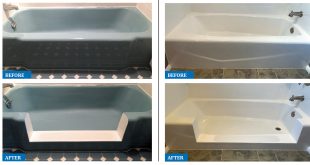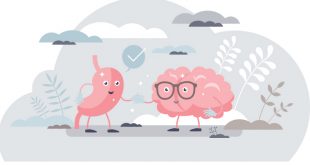By Renee Chillcott, LMHC
 Neurofeedback, also known as EEG biofeedback or BRAIN TRAINING, has been studied and practiced since the late 60’s. It was first discovered with animals and then was used to treat adults as a part of NASA’s space program. Our practice focuses on all ages and practice statistics tell us about 1/2 of our clients are over 18 years of age and 1/2 are under. Your brain is never too old or too young to learn a new behavior.
Neurofeedback, also known as EEG biofeedback or BRAIN TRAINING, has been studied and practiced since the late 60’s. It was first discovered with animals and then was used to treat adults as a part of NASA’s space program. Our practice focuses on all ages and practice statistics tell us about 1/2 of our clients are over 18 years of age and 1/2 are under. Your brain is never too old or too young to learn a new behavior.
WHAT IS NEUROFEEDBACK?
It is simply explained as exercise for your brain. By allowing you to see the frequencies produced by different parts of your brain in real-time and then using auditory (sometimes visual) feedback, your brain learns to better regulate itself. Neurofeedback can be used to help detect, stimulate, and/or inhibit neuron activity in the brain safely and without medication. It can help restore a wider “range of motion” in brain states, much like physical therapy does for the body.
While the client sits comfortably watching a movie or pictures appearing on the screen (a calm and focused state), the EEG equipment measures the frequency or speed at which electrical activity moves in the areas where electrodes have been placed. This information is sent to the therapist’s computer. The therapist is then able to determine what frequencies are out of balance. For example, when the EEG shows that you are making too many “slow” or “sleepy” waves (delta/theta) or too many “fast” waves (high beta), the therapist adjusts a reward band to encourage more balanced activity. This encouragement or “reward” happens through an auditory reinforcement of “beeps”.
WHAT CAN NEUROFEEDBACK
HELP ME WITH?
Anxiety – Anxiety manifests in many ways. Symptoms can include excessive worrying, a nagging sense of fear, restlessness, overly emotional responses, negative thinking, catastrophizing, and defensiveness. Anxiety is usually present in cases of addiction, perfectionism, being overly controlling, and behavioral issues among others. Helping people learn to calm themselves is by far the most effective solution for anxiety, and gives sufferers hope as they take control of their lives. Neurofeedback is one of the quickest and most efficient ways to teach people how to help themselves, and it’s easy to learn. Learning this life skill decreases the need for dependence upon medication and improves quality of life by teaching the brain to make healthier patterns on a more consistent basis so anxiety responses are avoided and a calmer brain stays more in control.
Depression – Feelings of sadness, anxious, “emptiness,” hopelessness, pessimism, guilt, worthlessness, helplessness, irritability, restlessness, losing interest in activities, fatigue and decreased energy, difficulty concentrating, remembering details and making decisions, insomnia, excessive sleeping, overeating, appetite loss, thought of suicide , suicide attempts, aches or pains are all associated with depression. Neurofeedback actually retrains the dysfunctional brain patterns associated with depression, making it a powerful treatment tool. Neurofeedback can help restore healthier brain patterns and eliminate depression by teaching the brain to get “unstuck” and better modulate itself. Brain training works on the root of the problem, altering the brain patterns affiliated with depression. Treatment can bring lasting brain changes, is non-invasive, and produces no undesirable side effects.
ADHD/ADD and Processing Issues – ADD/ADHD is one of the most common Neurodevelopmental disorders of childhood and can persist through adolescence and adulthood. Those diagnosed display a number of symptoms including: inattention, hyperactivity, and impulsivity. In the brain, ADD/ADHD often displays as too many slow or too many fast neurons firing, particularly in the frontal and/or central lobes. Processing issues such as auditory, visual, and/or sensory can cause attention and focus problems as well. Because attention and focus problems are brain related, Neurofeedback allows people to work directly on the issue by training the brain to become calmer, more focused, and less impulsive. Neurofeedback is also an effective way to re-train the brain to process information in a more efficient way. When the brain improves, the behaviors will also improve.
Sleep/Insomnia – Neural patterns in the brain will shift in the evenings from an awake alert state to a calm state (winding down), then a sleepy state (dozing off so you go to bed), and then finally a deeply relaxed and asleep state (sleeping). If the brain is not able to shift into this pattern easily or if there is an imbalance that causes interference in the shifting process, falling asleep and/or staying asleep will be affected. Neurofeedback has the ability to positively impact sleep because it works on the areas of the brain that allow and regulate sleep. The EEG, which shows brainwaves, clearly reflects changes in sleep stages. Training brain patterns using Neurofeedback to decrease or increase brainwave activity helps the brain normalize sleep. Evidence shows that training brain patterns impacts sleep regulatory mechanisms, and people sleep better.
Symptoms of these conditions, among others, can improve through neurofeedback training:
Anxiety
Sleep disorders
Depression
ADD/ADHD
Sensory processing disorder
Bipolar disorder
Seizure disorders
Auditory/visual processing
Chronic pain/Fibromyalgia
Migraines/headaches
Traumatic brain injuries
Stroke
Cognitive decline
Peak performance
Oppositional defiant disorder
Rages/mood swings
Attention/focus/concentration
Reactive attachment disorder
Autism/Asperger’s
Learning disabilities
Obsessive/Compulsive disorder
HOW DOES A “BEEP” OR SOUND TRAIN MY BRAIN TO WORK BETTER?
The auditory or sound reward that corresponds to an increase or decrease in desired brainwave activity is able to affect the brain on a neurological level. Auditory reward stimulates auditory pathways, impacts the vestibular system, and has many connections to the reticular activating system, which modulates wakefulness and attention. These systems operate in our brains without conscious effort. Therefore, neurofeedback teaches your brain through automated learning with little or no behavioral effort. Another way to say this is that neurofeedback involves operant conditioning or learning. This type of learning teaches us through a reinforced reward system. The auditory reward (beep) is delivered on a schedule of reinforcement that promotes optimal learning; not too hard and not too easy. This schedule of reinforcement or reward provides just the right amount of resistance to evoke a positive learning pattern.
HOW DO I KNOW IF IT’S WORKING?
As the brain learns, you will see the changes. However, everyone learns at different speeds, so it cannot be determined how quickly someone will learn. On average, children take about 10-20 sessions to see changes and we can discuss what to expect during the intake appointment. For adults, changes are usually noticed within 10 sessions. Total treatment is an average of 40 sessions, however we individualize treatment; some people need more and some less. The goal of Neurofeedback is to achieve balance and flexibility so recognizing that it is working can be a challenge. First, as no two brains are alike, no two people have the same experience with Neurofeedback or learn at the same speed. Second, setting up treatment goals can also vary from person to person and as you are unable to control how fast your brain changes, therefore, you must first learn how to observe. This ability to observe can be quite challenging for some people. Up to this point in life, your brain hasn’t been behaving the way you would like it to. So, observing changes requires a bit of practice. We will be discussing your experience with you when you come in for each session. And third, you’re going to be looking for an absence of symptoms. Looking for something to “not” be there definitely requires reflection rather than observance. We’ll teach you how to look back at the end of an event, day, month, and even couple of months, to see if you notice things are different. And most importantly, we listen to you telling us how you “feel”.
IS NEUROFEEDBACK NEW?
HAS IT BEEN RESEARCHED?
We have several journal articles, studies and books in our office for you to enjoy, however because Neurofeedback has been researched since 1960’s, we cannot possibly have everything on hand. Here are a few resources.
Look up the work of:
Dr. Joe Kamiya and Dr. Barry Sterman
(Credited for earliest development of Neurofeedback).
Look for specific researched conditions:
https://www.eeginfo.com
https://www.isnr.org
http://www.eegspectrum.com
Print Resources:
Journal of Neurotherapy
Neuroregulation
Applied Psychophysiology and Biofeedback
Books:
A Symphony in the Brain by Jim Robbins
Healing Young Brains by Robert Hill & Eduardo Castro
The Healing Power of Neurofeedback by Stephen Larsen
Neurofeedback in the Treatment of Developmental Trauma
by Sebern Fisher
HOW DO I
GET STARTED?
Getting started is easy, just give us a call. The Brain and Wellness Center staff will answer your questions, and help you get scheduled. If you are wondering what services are best for you? We can help determine that at the time of the intake, in a telephone consultation, or you can schedule a face to face consultation and see our facility. Call, email or message us today!
Brain and Wellness Center
7301 W. Palmetto Park Rd., Suite 102A,
Boca Raton, FL 33433. (561) 206-2706
e-mail us at info@bocabraincenter.com,
or text us at (561) 206-2706
or visit our website at www.BocaBrainCenter.com.
Check Also
IS THERE A CONNECTION BETWEEN MY BRAIN AND MY GUT?
By Renee Chillcott, LMHC Every one of us has made a reference to our gut …
 South Florida Health and Wellness Magazine Health and Wellness Articles
South Florida Health and Wellness Magazine Health and Wellness Articles




